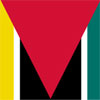Update:
You can find a video of the presentation itself online here.
 Chris Haller
Chris Haller
http://www.publicagenda.org/staff/chris-haller
Public Agenda
Promising Practices in Online Engagement
Allowing experts and citizens to collaborate. Often dealt with under the heading of citizen journalism. A formerly closed profession is now more often. Citizens capture news as it happens, work with journalists to capture information.
Websites that generate bi-partisan buy-in. In a polarized environment, how do we get people to talk together. Techpresident is one example. How do we get a new mechanism to observe elections, report on experiences, multichannel approach.
Connecting neighbors. Communication mechanism on the smallest scale. eDemocracy.org use internet to connect neighborhoods. Front Porch Forum in Vermont. Neighborhoods where more than half the people are signed up. Run on the most simple listservs you can imagine. Sometimes old tools are best.
Merge online and face-to-face engagement. In the end we realize that both face-to-face and online have advantages and disadvantages. All are part of a toolbox.
Often key is not technology but process.
Example: NAPA Health IT Online Dialogue (http://www.scribd.com/doc/12345523/A-National-Dialogue-on-Health-IT-and-Privacy-Final-Panel-Report)
Online brainstorming process. Defines content type. Concerns, stories, etc,
Key considerations:
Duration:
- Find a timespan that is long enough to allow participation Don’t want things to go on more than 2 weeks because it reaches a fatigue point. Will spike at the beginning, when there are reminders, and at the end. Endpoint. Challenging if no endpoint; forum that is open-ended, people lose interested. No point in participating. Lots of forums are open but die or become inactive. Lack of activity contributes to lack of activity. If no activity in a few days, people leave. Pre-registration is useful. Send email that says, “Now we’re starting.”
Seeding:
- Seeding. If you invite people to come, there should be something there. During pre-registration add box asking for question or statement that can create initial content. Reach out to colleagues friends to ask them to do this.
Avoiding early submission bias.
- Those that pop up first tend to stay there. One way to deal with it is to have various lists or various views of the same list: highest ranked or most recent, etc. Or work with preregistration question
- What is being rated. How are they rating it? What do ratings mean?
Example: KCEngage (http://kcengage.ning.com/)
Social networking, using ning.com
Out-of-the-box miniature facebook. Facebook only on a small scale. Great for building communities of practice.
Community building is hard to do. Harder than we thought even when people are committed to the topic.
Ning.com lets you build your own website.
Build groups/communities. Member section, events calendar.
90-9-1 rule. 90% comes once, leaves. 9% come from time to time, are occasionally involved, 1% is the core group that keep it alive. Simple discussion board, MyBarackObama.com, experienced these phenomena.
Consultants find potential users who are enthusiastic about the online options but do not follow through, do not commit significant time/energy. Need a core group of users before it will work. Same thing is true of facebok groups, etc.
Need Community Manager. Goes beyond claming flame wars or introducing new question but also reaching out to new people, getting them on board, making sure they know what goes where, checking web statistics to figure out where links come from, reaching out to blog communities.
Notifications. Need to send out notifications to get 9% involved, re-attract some of the 90%. When listserv is active, it can seem like spam. If you get 20 or more you’ll begin to ignore. If you don’t send any reminders, they give up. Automatically subscribing commenters. Summary email to encourage people, tell them how to get back involved.
Activities. Certain ways to engage users. Contest, other mechanisms. Goes across the board. Will drop soon. Facebook group have hard time keeping people involved unless they’re used for planning.
Incentives. Contests, reasons to participate. For theirs, with $500 reward, nobody just found it and did it. All done through classes, students. Extra credit was biggest incentives in those cases.
Submission Format. Got 61 submissions for student essays, only 5 for video. People tended to choose traditional methods. Video takes more skills.
Other tools:
Questions:
Q: What exactly does bi-partisan buy-in mean? How do you measure that?
A: Outreach to bring in people from all sides of the aisle, get people to participate in the firstplace. Measurement is important. Can do some measurement after dialogues.
Q: Is it best to go to smaller venues to have these discussions, not the 300 million people in Facebook.
A: When you make a group you’re not immediately talking to 300 million people. Facebook is a great way to start outreach. Group or fanpage are a way to start. You can’t go knocking on students’ doors but you need to reach them somehow. Question becomes how compelling is this, how many students are willing to recommend to others. Use it as a gateway.
…
Q: We want to get a widely spread group involved in a conversation. How do we do that:
A: Use third party platform but use Facebook, Twitter etc. as portal, ways to get people to the platform, to one shared space that has a similar experience for everybody. If topic is relevant, people will make the switch.




 Chris Haller
Chris Haller David Smith
David Smith Jose Antonio Vargas
Jose Antonio Vargas In October my university will be sending a number of remarkable students and faculty members to Mozambique to watch elections in one of Africa’s vibrant democracies, and I have the great good fortune (especially great in light the distinct absence of references to Mozambique in my professional work) to help coordinate the trip.
In October my university will be sending a number of remarkable students and faculty members to Mozambique to watch elections in one of Africa’s vibrant democracies, and I have the great good fortune (especially great in light the distinct absence of references to Mozambique in my professional work) to help coordinate the trip.